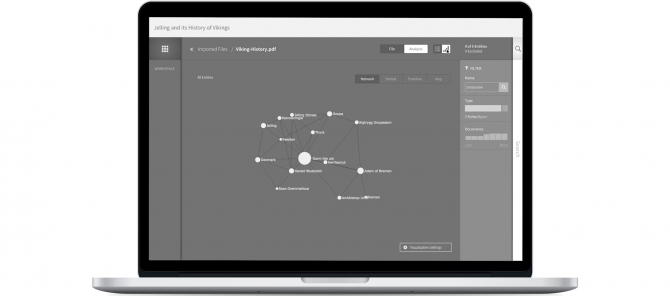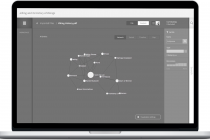Digital Curation Technologies, 2015-2017
Digital content and online media have reached an unprecedented level of relevance and omnipresence. In the context of a research and technology transfer project on Digital Curation Technologies for online content, ART+COM cooperated with the German Research Center for Artificial Intelligence (DFKI) and three other Berlin-based media companies to develop a platform that provides curation services.
The curation services comprise several semantic text and document analytics processes as well as knowledge technologies that can be applied to document collections. The key objective of this set of curation services is to support knowledge workers and digital curators in their daily work, i. e., to automate or to semi-automate processes that the human experts are normally required to do intellectually and without tool support.
Within the project, ART+COM focused on the development of a user interface that is primarily meant to be used by in-house content curators who develop, among others, concepts and exhibits for museums, showrooms and exhibitions. Based on a user-centered design approach, ART+COM’s curation interface comprises features requested and tailored to the requirements of their target users.
The final prototype allows users to begin their research by importing existing documents, such as briefing materials from the client, or by performing an explorative web search with keywords. The content is automatically analysed by the semantic curation services provided by DFKI, which extract relevant information. The extracted named entities are enriched with useful additional information from Wikidata and with top-level ontology labels in order to give the user an overview of the distribution of information in categories, for instance, person, organisation, and location.
Our second focus was to visualise the extracted information. We implemented the visualisations in D3, a Javascript library optimised for visualising data with HTML, SVG and CSS. The challenge is to provide intuitive and effective interaction modalities so that the users can gain a quick overview of a specific topic or drill down into the semantic knowledge base to explore deeper patterns or relationships.
We realised several visualisations including a network overview, semantic clustering, timelining and maps. Combining all of the above mentioned visualisations for doing research on „Harald Bluetooth“, for example, the user can explore the places and people to which he is connected in the network visualization, view his timespan of reign and family lineage along the timeline, and explore notable events that are highlighted on the map.
The project “Digitale Kuratierungstechnologien” (DKT) was supported by the Federal Ministry of Education and Research (BMBF),”Unternehmen Region”, Instrument Wachstumskern-Potenzial (no. 03WKP45).
More information at http://www.digitale-kuratierung.de


